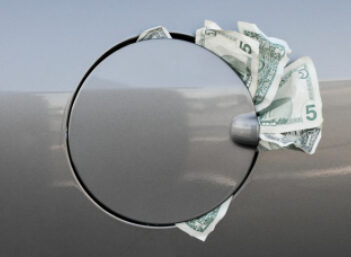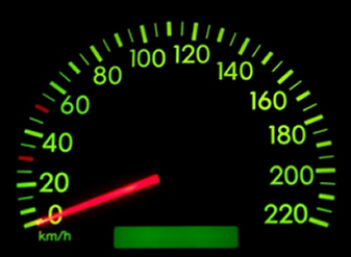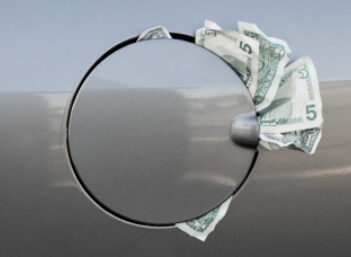We all have our bad spending habits: a $3 latte in the morning, an expensive taxi fare now and then, a cheap piece of jewelry when we're down in the dumps.
We're all for splurging,
especially if you do it right. In other words, go ahead and buy the things that make you happy, as long as those small purchases motivate you, and you plan them out for maximum enjoyment ... rather than simply throwing your money away.
For example: You buy yourself a bouquet of fresh flowers at the end of the month as a reward for staying on budget. Let's say that costs you $20 a month, which adds up to $240 a year. That might sound like a lot, but if it motivates you to stay on track with your budget, you're probably
saving yourself way more than $20 each month. So we
call that a good splurge.
But $20 a month could also go toward a lot of stupid stuff that won't make you happier, won't improve your life and won't motivate you to achieve your financial goals. We just call that silly.
Pointless ATM Fees
You should never have to pay money to access your money. But around the end of last year, the average ATM fee was about $2.40, and the fees seem to be only going up.
These fees also add up, but they're totally avoidable if you withdraw at your own bank, though that may
mean going an extra few blocks to your bank branch, or switching to a bank with more convenient locations. Alternately, you could consider an online-only bank like Ally or ING, which lets their customers use any out-of-network ATMs they want and reimburses them for the fees. Find out if you should switch banks with
this quiz.
Savings: $125 a year (if you avoid a weekly ATM fee)
The Same Dress You Already Own 10 Of
Okay, okay, it's a different shade of red and the neckline is a little bit different, but you don't really need another dress like that. Or top, or pair of shoes, or purse. We're not saying you should totally abstain from fashion trends or shopping, but take a cue from
this woman who follows the one-in-one-out rule: For every new pair of shoes or shirt or whatever she buys, she gives away an older version. You can also use LearnVest's
Purchase Appraiser to find out when an expense is really worth it.
Not only does this reduce the clutter in your house, it also ensures that you're buying something that fills a need, rather than boredom or 'why not.' (Bonus points—and extra
income—if you sell the clothing you no longer want on eBay or Amazon
Prime.)
Savings: $500 a year (if you skip one 'why not' wardrobe purchase a month). More if your old stuff offsets the cost of your new expenditures.
Lottery Tickets
One out of every three people in the U.S. thinks that winning the lotto is their only shot at becoming financially secure, but the odds of winning a state lotto are roughly 18 million to one. Meanwhile, the odds of getting struck by lightning are about 2.65 million to one -- significantly better.
Buying lottery tickets is a fun exercise in wishful thinking, but you’re essentially throwing your money away. The $5 you might spend on one big-number ticket could turn into more than $100 over time, if you invested it for retirement.* When you 'invest' it in the lotto, it just turns into $0.
Savings: $260 a year (if you save on a weekly $5 ticket); $5,650 if you invested that amount for retirement*
Actual, Physical DVDs
Buying DVDs is so 2000. Nowadays, everything is online. Why do you need to own a DVD that you’ll watch once before it collects dust on a shelf?
If you're an avid movie watcher, consider subscribing to a service like Netflix or Hulu Plus instead, so you can stream as many movies as you want for as little as $8 a month. If you're only an occasional watcher, you can rent movies online from services like Amazon and iTunes for around $2-$5.
Not sure where you fall?
Take this quiz for a personalized recommendation based on how much you really use your media.
Savings: $180 a year (if you buy a $15 DVD once a month)
Takeout Lunch
We know, it can be a hassle getting to work on time, let alone preparing lunch before you leave. We understand it's only human to buy lunch at work now and again, but doing it regularly will take a toll on your wallet.
Some better ideas? You can
repurpose your leftovers so you don’t have to make a new meal every day. You can also assemble your lunch at the office, if it's appropriate where you work. For example, you can bring in raw salad components and do the slicing at lunchtime. And, if you're really crunched for time and need something easy, even buying prepackaged meals at the drug store or supermarket will be cheaper than going to a restaurant or deli.
Savings: $1,092 a year (if you buy a $10 lunch three days a week, compared to $3 if you bring your own)
Regular Movies, Just In 3-D
3-D movies are often a way for movie companies to make extra dough, because it allows them to charge more per ticket to the same movie. Before shelling out more, ask yourself, what else could you do with the $3 or $4 extra you spent on the fancier ticket? You just want to go in with your eyes open (literally).
Bottom line: Seeing 'Avatar' in 3-D? Probably worth it. Paying to see the re-release of 'Finding Nemo' in theaters just to see it in 3-D? Probably not.
Savings: $96 a year (if you opt for a 2-D movie instead of 3-D twice a month)
Hardcover Edition Of A Book You Won't Reread
We love reading. A lot. We even made a summer reading list, and some of you are reading through our selections one by one.
But, in this digital age -- and given the gift that is the public library -- you shouldn't be spending the big bucks on a hardcover book unless it's your all-time favorite and you know you're going to want it as a headliner on your bookshelf for years to come.
Hardcover books are, on average, more than $32, whereas paperbacks are more like $16. So you could save half the price of your next book (even more than that, if you're really not going to reread it and you sell it). And that's not even counting getting books for free at the library.
Savings: $384 a year (if you buy one hardcover book a month for $32 each)
Eco-Unfriendly Bottled Water
Sure, some people prefer the taste of filtered water, but, according to the EPA, drinking your daily recommended eight glasses of water from the tap costs 50 cents a year, while drinking that same amount from bottles could cost you as much as $1,400. Not to mention, ditching disposable bottles helps the environment.
If you don't like the taste of plain old tap water, filtration systems are pretty inexpensive, like
this $26 one from InstaPure (replacement filters cost
under $20). For a system you don't have to install in any way, you could get a
basic Brita pitcher for as little as $12.
Savings: up to $1,400 per year



